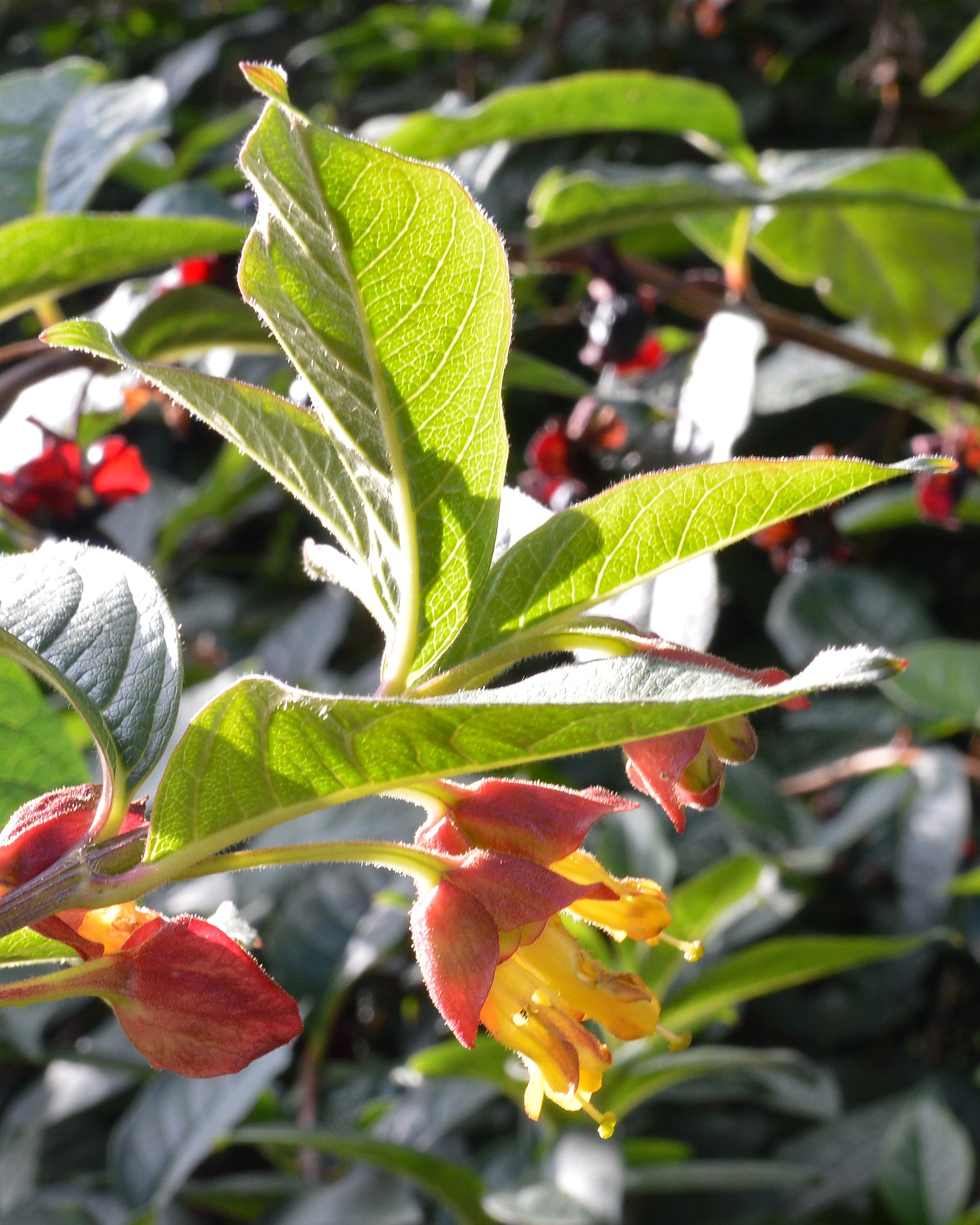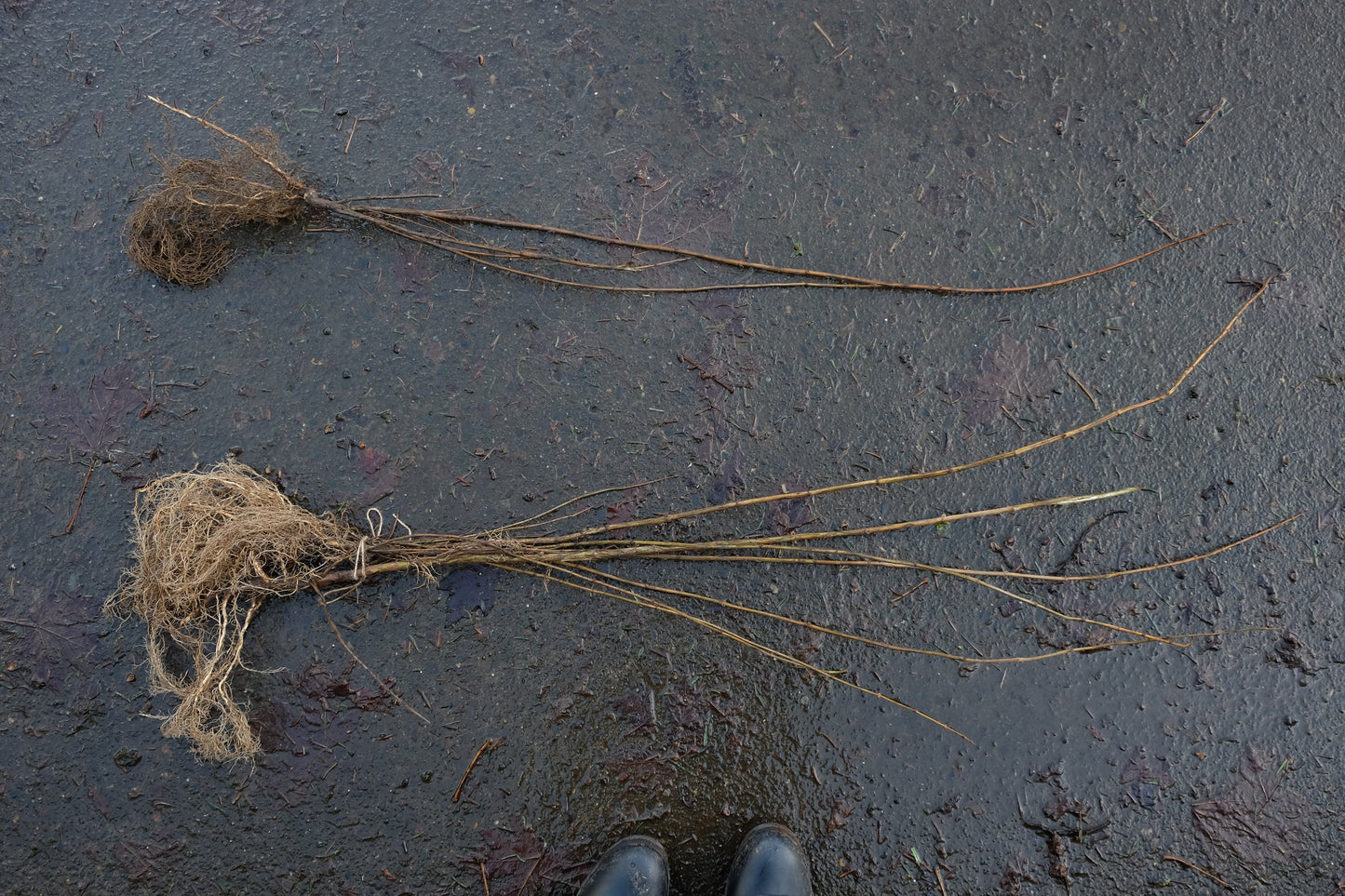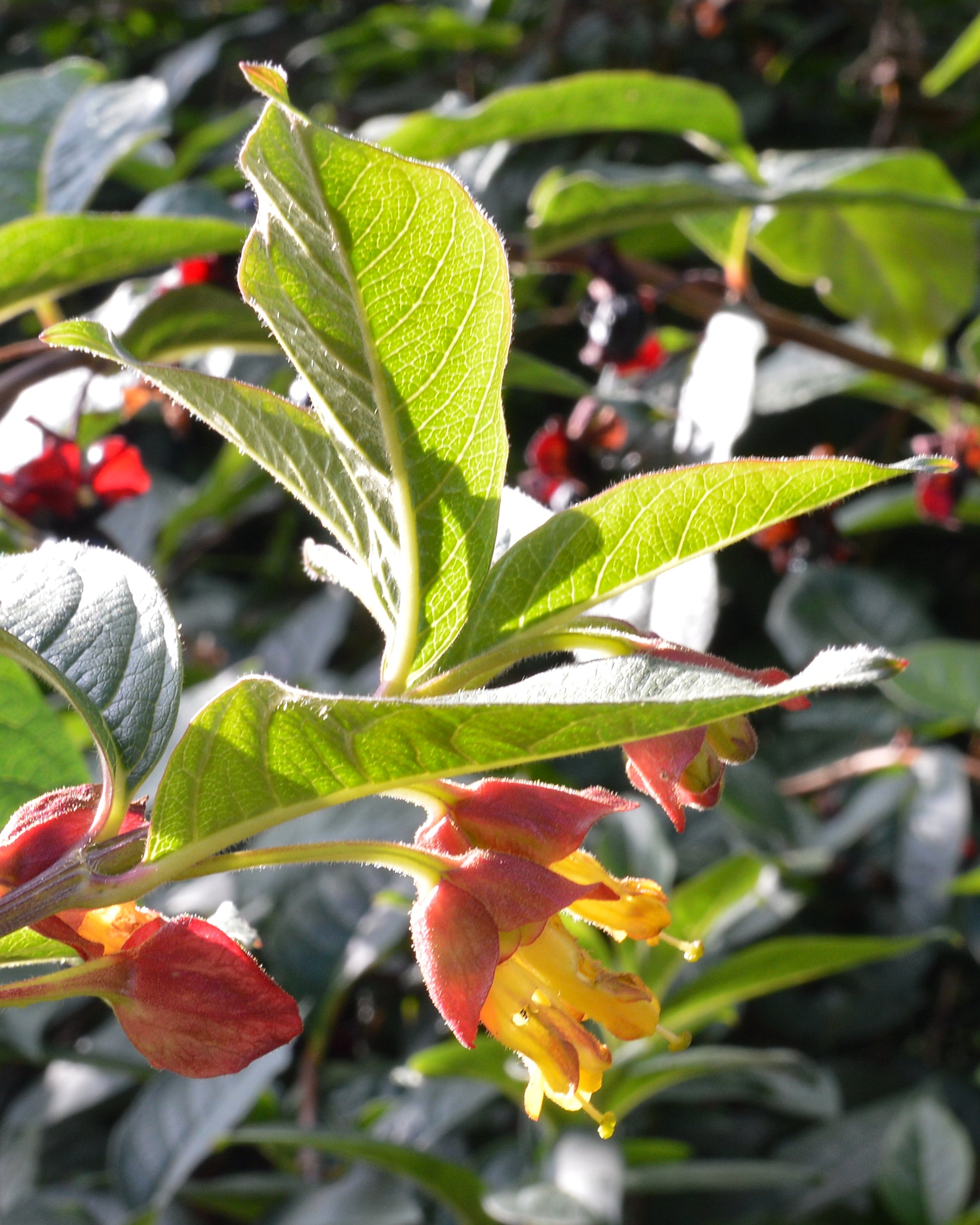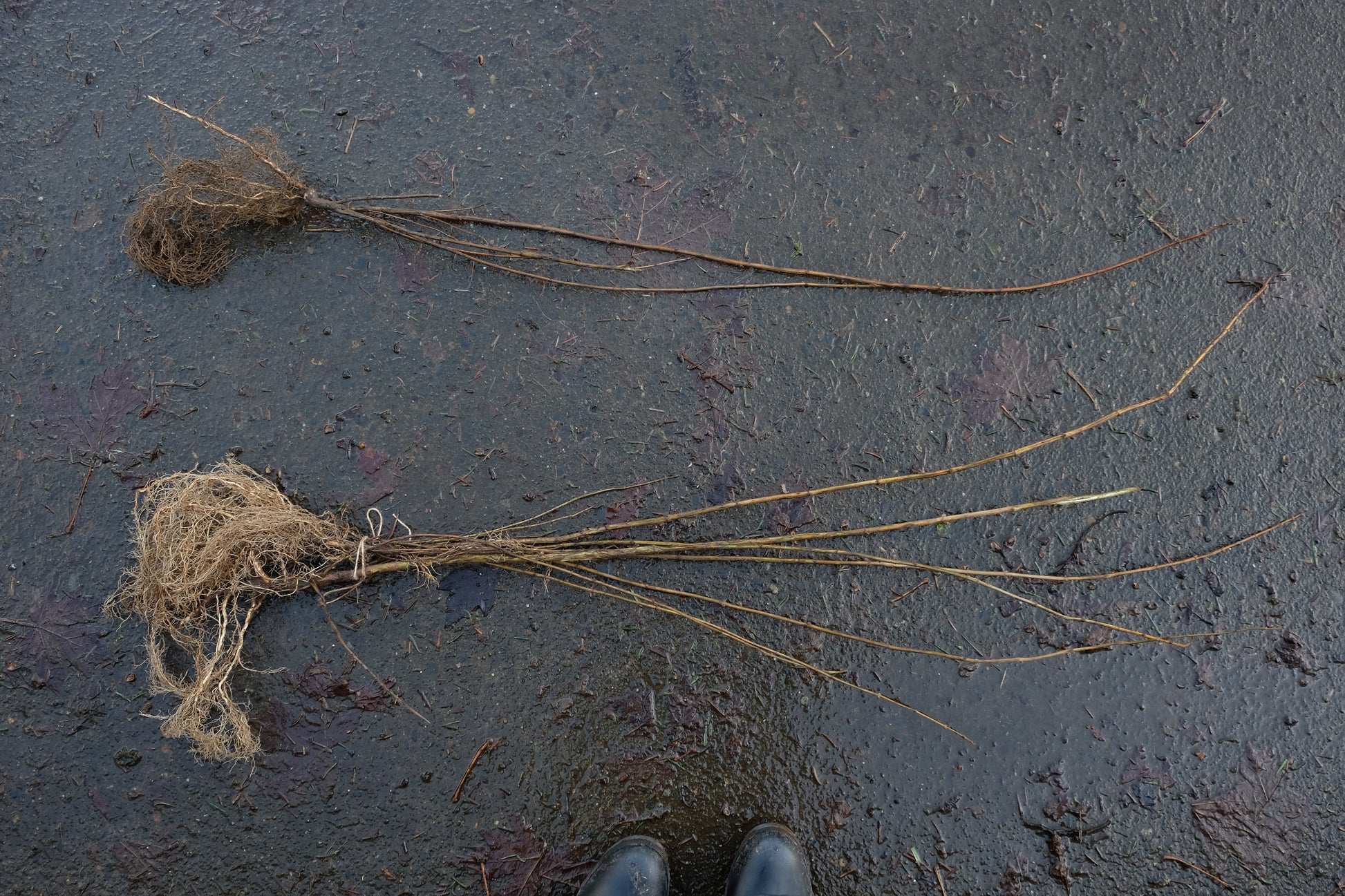Twinberry – Bundle of 5 Bare Root Plants
Twinberry – Bundle of 5 Bare Root Plants
Couldn't load pickup availability
Lonicera involucrate
Sold as: Bare Root Plants
Twinberry (Lonicera involucrata) is an upright deciduous shrub that is an excellent plant for attracting pollinators like hummingbirds, bees, and butterflies. The leaves are in opposite pairs, egg or broadly shaped, pointed, and often hairy beneath. The flowers are tubular, in pairs, and yellow. The double or “twin” shiny black berries that ripen in July or later are cupped by prominent purple-red colored bracts.
Classification: Perennial
Key Characteristics: Fruit, small yellow flowers
Light Requirements: Full sun, part shade
Water Requirements: Moist soil
Ease of Growing: High
Growth Rate: Moderate
Bloom Time: April – August
Spreads: No
Benefits: Wildlife, Rain garden, Pollinators, Beneficial insects, Wildfire resistant, Riparian zones, Deer resistant, On Portland Plant List, Hummingbirds
Edible: No
Mature Height: 8-12 feet
Mature Width: 4-10 feet
Photo Credits:
Image 1: Ryan Hodnett via Wikimedia Commons
Image 2: Ashley Smithers via Clark Conservation District




